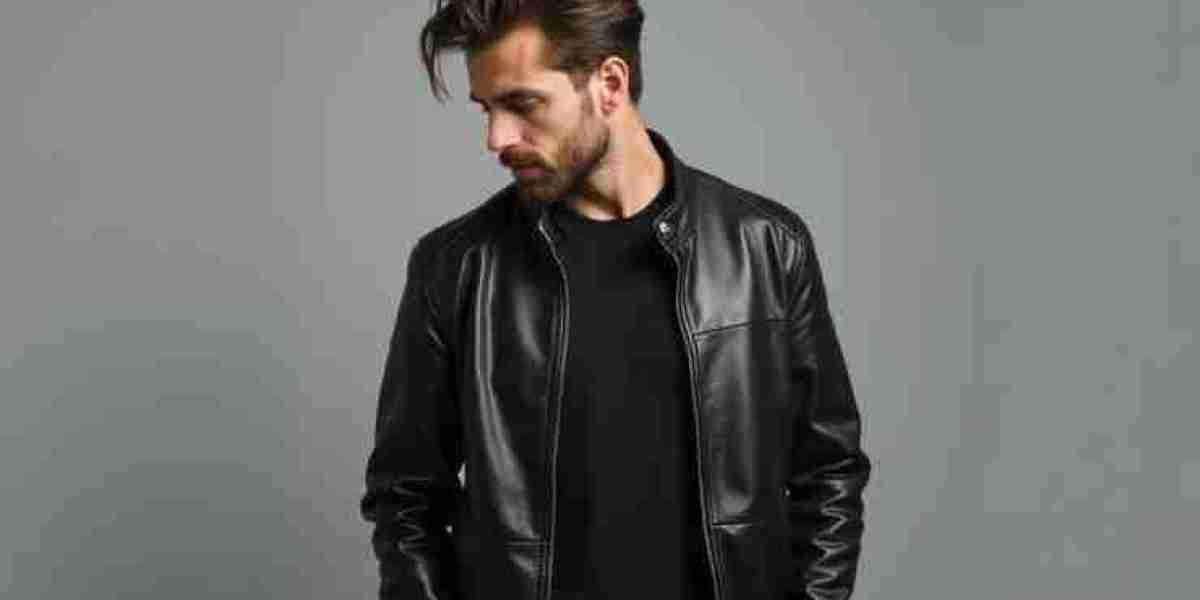Throughout fashion history, few garments have achieved the iconic status and cultural permanence of black leather jackets. This remarkable piece of clothing has transcended its utilitarian origins to become a powerful symbol of rebellion, sophistication, and self-expression across generations. From functional beginnings to current status as wardrobe essentials, black leather jackets have demonstrated an extraordinary ability to evolve while maintaining their distinctive identity. Their journey through various cultural movements and fashion eras reveals a fascinating story of adaptation, rebellion, and ultimate acceptance into mainstream fashion consciousness.
Historical Foundations and Practical Beginnings
The story of black leather jackets begins not on fashion runways but in practical applications where durability and protection were paramount. Early versions emerged during the late 19th century as protective gear for motorcyclists, aviators, and industrial workers facing harsh conditions. The development of modern zipper technology in the 1920s revolutionized jacket design, enabling more secure closures and the distinctive asymmetrical front that would become characteristic of motorcycle styles. During World War II, military aviators wore leather flight jackets specifically designed for warmth and protection in open cockpits, featuring functional elements like snug cuffs, waistbands, and multiple pockets that would influence civilian designs for decades to come.
The post-war period marked a significant transformation as surplus military jackets entered civilian wardrobes and manufacturers began producing purpose-built civilian versions. Returning soldiers often kept their flight jackets as practical casual wear, introducing the style to broader audiences and laying the foundation for its transition from purely functional garment to fashion statement. This era saw the refinement of now-classic styles including the perfecto motorcycle design, the bomber jacket, and the racer jacket, each serving specific functional purposes while establishing aesthetic elements that would become timeless in their appeal and recognition.
Cultural Significance and Symbolic Transformation
The black leather jacket's transformation into a cultural symbol accelerated dramatically during the 1950s, when it became associated with emerging youth culture and rebellion. Film performances featuring actors wearing leather jackets created powerful associations with nonconformity and anti-establishment attitudes that resonated with young audiences. The garment's adoption by motorcycle clubs further cemented its rebellious image, representing freedom, danger, and outsider status that appealed to those seeking to define themselves against mainstream culture. This period established the black leather jacket as wearable symbolism, capable of communicating specific attitudes and affiliations without the need for words.
Throughout subsequent decades, the jacket accumulated additional layers of meaning as it was adopted by various music and youth movements. Rock and roll artists embraced it as a symbol of sexual freedom and teenage rebellion, while the punk movement of the 1970s customized jackets with studs, paint, and patches, transforming them into personalized statements of anti-establishment values. Heavy metal bands and their fans adopted the style, associating it with a different form of musical and cultural expression. Each subculture imbued the garment with new meanings while maintaining its essential rebellious character, demonstrating the jacket's remarkable ability to absorb cultural significance while remaining instantly recognizable across generations and social contexts.
Design Evolution and Technical Innovation
The design evolution of black leather jackets represents a continuous dialogue between tradition and innovation that has spanned decades. The classic motorcycle style remains largely unchanged in its essential elements: asymmetrical zipper, snap-down lapel, zippered pockets, and belted waist that define its distinctive silhouette. The bomber jacket maintains its recognizable form with ribbed cuffs and waistband, while the racer jacket offers a minimalist approach with clean lines and minimal hardware. Each style serves different aesthetic and functional purposes while maintaining the essential qualities that make leather jackets unique and desirable.
Contemporary designers have expanded these traditional silhouettes through technical innovation and creative reinterpretation that respects the garment's heritage while pushing boundaries. Advancements in leather treatment have produced softer, more supple materials with varied textures and finishes that enhance comfort without sacrificing durability. Modern manufacturing techniques allow for more precise construction and intricate detailing that elevates the overall quality and appearance. Designers experiment with new silhouettes including elongated versions, cropped styles, and oversized interpretations that reflect current fashion trends while honoring traditional design elements. These innovations have expanded the jacket's versatility while maintaining its iconic status, ensuring its continued relevance across evolving fashion landscapes and personal style preferences.
Material Excellence and Construction Quality
The character and longevity of black leather jackets depend fundamentally on material quality and construction techniques that determine their appearance, feel, and durability. Different leather types offer distinct characteristics: full-grain leather develops a rich patina over time that tells the story of its wear, top-grain leather provides durability with a consistent appearance that maintains its beauty through years of use, and exotic leathers offer unique textures and patterns that create truly individual pieces. The quality of the hide, determined by factors including animal breed, living conditions, and tanning processes, significantly impacts the jacket's performance and aging characteristics.
Superior construction manifests in numerous details that contribute to the jacket's performance and longevity, reflecting the craftsmanship invested in each piece. Precision stitching, reinforced stress points, properly set sleeves, and carefully finished edges demonstrate quality workmanship that ensures years of reliable wear. Attention to pattern matching, hardware selection, and lining installation reflects the artisanal care invested in the garment's creation. These elements combine to create jackets that not only look appealing but function properly, providing comfort, freedom of movement, and protection from the elements. The best examples represent a perfect balance between material excellence and technical proficiency that results in garments capable of lasting for decades with proper care.
Contemporary Styling and Versatile Applications
In contemporary fashion, black leather jackets demonstrate remarkable versatility that allows them to seamlessly integrate into diverse style aesthetics and occasions. They serve as effective layering pieces that add texture, edge, and sophistication to various outfits, transforming simple looks into fashion statements. Pairing with tailored trousers creates a smart-casual look that balances refinement with rebellion, while combination with denim and boots reinforces a rugged, casual aesthetic that never goes out of style. The jacket's ability to elevate basic garments makes it invaluable for creating outfits that appear considered and stylish with minimal effort, serving as the foundation for countless wardrobe combinations.
The modern fashion landscape embraces black leather jackets across gender expressions and personal style preferences, reflecting broader cultural shifts in fashion inclusivity. Designers have moved beyond traditional gendered sizing and styling, creating versions that appeal to diverse wearers regardless of how they identify. Contemporary styling often plays with proportion and contrast, pairing leather jackets with unexpected items like flowing dresses or tailored suits that create interesting visual tension. This styling flexibility contributes significantly to the garment's enduring appeal, allowing wearers to incorporate it into their personal aesthetic while benefiting from its iconic status. The jacket serves as a foundational piece that can anchor numerous outfits across seasons and occasions, making it one of the most valuable investments in any wardrobe.
Proper Maintenance and Preservation Techniques
Maintaining black leather jackets requires specific care practices that differ from other materials but are essential for preserving their beauty and functionality. Regular conditioning with appropriate leather treatments preserves the material's suppleness and prevents drying or cracking that can compromise the jacket's appearance and protection. Storage considerations include using padded hangers to maintain shape and allowing adequate air circulation to prevent moisture buildup that could lead to mildew or deterioration. Protection from prolonged direct sunlight prevents fading and maintains the rich black color that defines these garments, while prompt attention to spills and stains prevents permanent damage that could diminish their appeal.
Professional care becomes necessary for deeper cleaning and significant repairs that require specialized knowledge and equipment. Experts can address issues like torn seams, broken zippers, and stained linings without compromising the leather's integrity or appearance. The natural aging process of quality leather creates a distinctive patina that many enthusiasts consider enhances the garment's character and tells the story of its wear. This evolution makes each jacket unique, reflecting the wearer's history and care practices through subtle changes in texture and appearance. Understanding proper maintenance techniques ensures that black leather jackets can be enjoyed for decades, often improving with age when cared for appropriately. This longevity makes them sustainable fashion choices in an era increasingly concerned with consumption patterns and environmental impact, representing investment pieces that withstand fleeting trends.
Cultural Legacy and Future Evolution
The enduring appeal of black leather jackets lies in their unique combination of practical utility, cultural significance, and aesthetic versatility that transcends temporary fashion trends. They represent a rare convergence of functional design and symbolic meaning that communicates specific attitudes while remaining adaptable to personal expression. The garment's ability to maintain relevance across generations stems from its fundamental qualities that appeal to diverse wearers regardless of age, background, or style preferences. As fashion becomes increasingly conscious of sustainability and longevity, the durable nature of quality leather jackets aligns with contemporary values regarding consumption and waste, positioning them as responsible choices for conscious consumers.
Future iterations will likely continue balancing traditional craftsmanship with innovative materials and production methods that address evolving concerns and opportunities. Technological advancements may introduce improved sustainable alternatives and manufacturing processes while maintaining the aesthetic qualities that define black leather jackets and make them desirable. The garment's rich history and cultural resonance provide a strong foundation for continued evolution, ensuring that black leather jackets remain relevant and desirable for future generations seeking both style and substance. This unique combination of historical significance, cultural meaning, and practical appeal secures the black leather jacket's place as a permanent fixture in the landscape of iconic fashion garments, continuously evolving while remaining true to its essential nature and enduring spirit.






